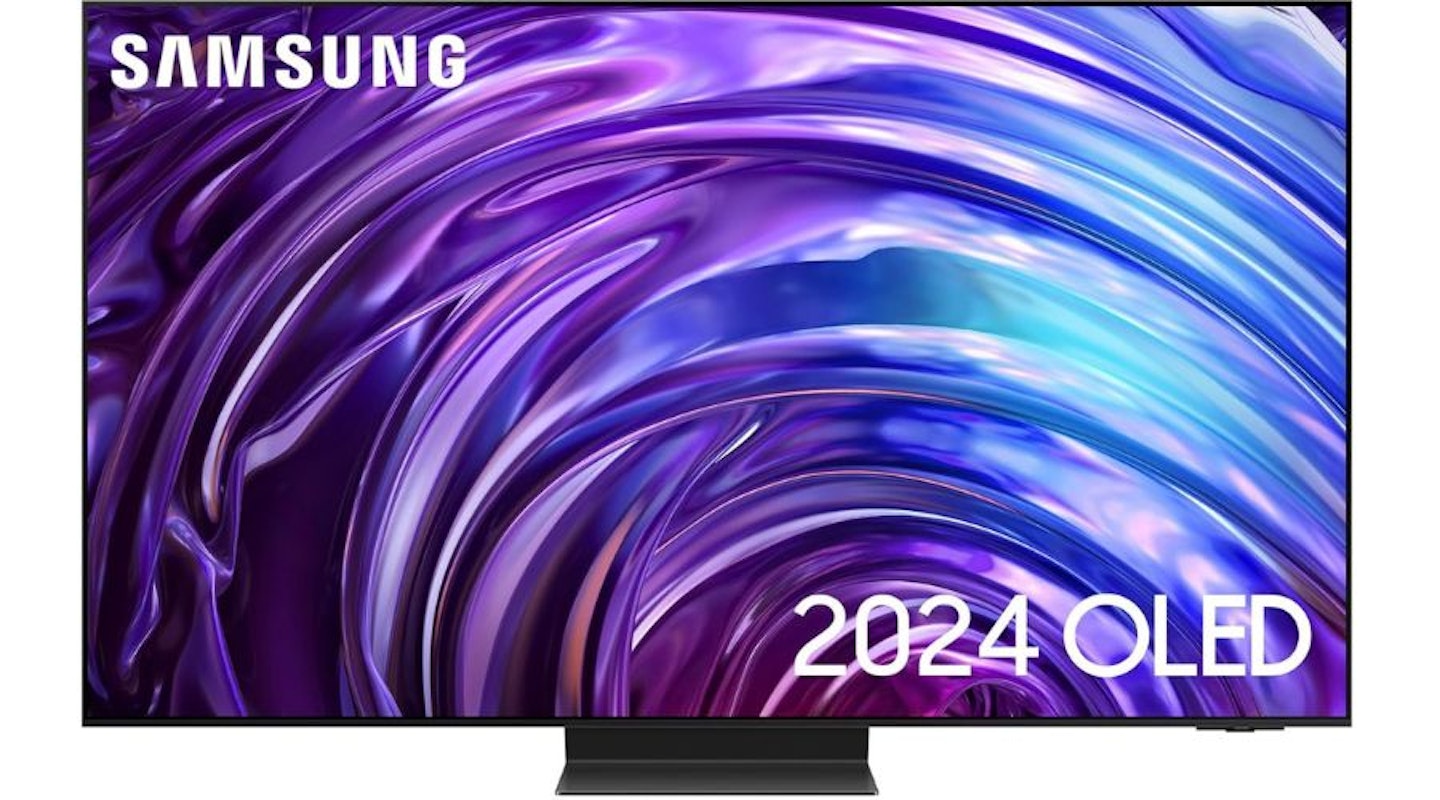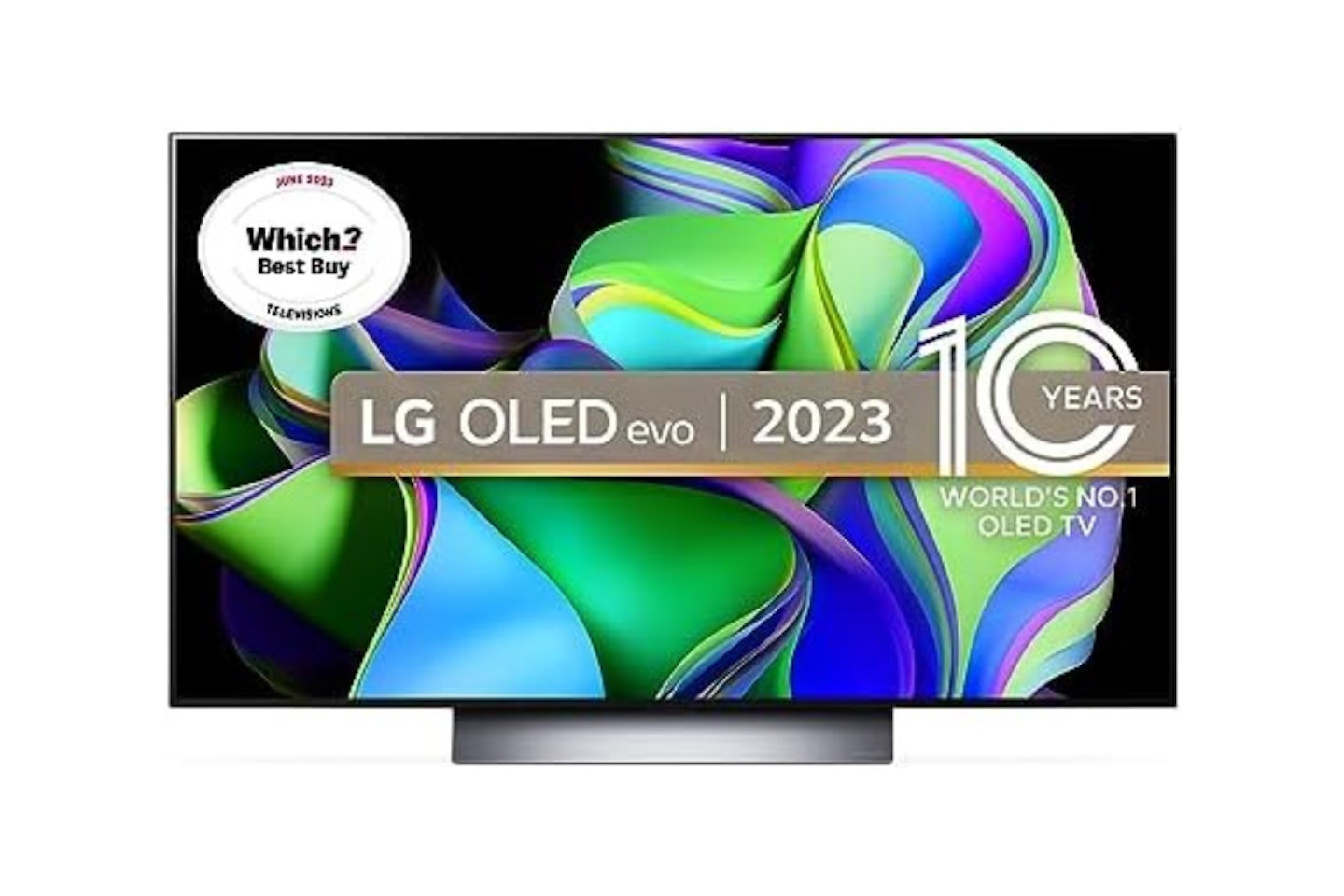As all avid gamers will know, when it comes to playing to win, only the best TV will do. That's why we've picked out the latest and best 4K TVs for Xbox Series X. These eye-popping windows into your gaming world are designed and engineered with console gamers in mind. Without the right TV, some of the features you've been expecting from a next-gen piece of kit like the Xbox Series X could be lost.
So, what are the tech specs that you should be looking for? Well, for starters, there's the need for ultra-low latency, high and variable refresh rates, and that deep HDR colour palette. Then there's the 4K television panel type itself, with OLED, QLED and QD-OLED competing over contrast levels and colour representation. Naturally, you're going to want absolute cutting-edge V-sync technology too, for less screen-tearing and judder-free gameplay.
Best 4K TVs for Xbox Series X in 2024 at a glance:
• Best overall: LG C4 4K Smart OLED TV – View at Currys
• Best budget: TCL QM8B – View at Amazon
• Best big screen: Samsung QN95D – View at Currys
• Best mid-budget: Sony Bravia XR A80L – View at Amazon
Previously, most of your Xbox One gaming has probably been at 60fps – or lower if you go back far enough. With 4K screens now becoming the norm, the Xbox Series X increasingly offers some terrific games at a super-high 120fps. Fans of games like Halo Infinite, Fortnite and Call of Duty: Warzone will be enthralled by smooth motion and clarity - as long as they've chosen the right 4K TV for their gaming sessions.
Perhaps your console allegiance lies with Sony, in that case, we've picked out yet another great selection of 4K TVs perfect for the PS5. But for those in the Microsoft camp, here's our pick of the best 4K TVs for the Xbox Series X. You're about to enter a whole new world of gaming excellence.
Best 4K TVs for Xbox Series X in 2024
All prices are correct at the time of writing. Prices, stock and deals are subject to change without notice.
Best overall
LG has consistently been one of the best tv brands for years now, and for gamers, the LG C4 OLED TV is an absolutely superb choice. The OLED screen provides superb contrast between light and dark, and with peak brightness at over 1000 nits, this screen is great for vivid game and cinematic experiences.
The design hasn't changed much over the last few years, but it doesn't really need to. A beautiful slim design with incredibly thin bezels house that glorious screen. And it's ably supported by 40W speakers that utilise Dolby Atmos.
It's also got plenty of gamer-specific tech, too – AMD FreeSync and Nvidia G-Sync compatibility, along with a 120Hz variable refresh rate. Support is available for 144Hz inputs, and auto low latency mode. There's an input lag of just 0.1ms in gaming mode, giving you the best possible chance of coming out on top.
LG's webOS is a very user-friendly smart TV interface, one of the best around, in fact. If you're looking for a beautiful screen with superb gaming performance on top, and at a reasonable price, this is the one to go for.
Pros
- One of the best displays on the market, thanks to the LD OLED panel and Dolby Vision
- 0.1ms response time is lightning fast for gaming accuracy
- Variable 120hz refresh rate ideal for smooth game visuals
Cons
- Serious gamers might want to amp up the sound with a soundbar or gaming speakers
| Screen size: | 42, 48, 55, 65, 77, 83-inch |
| Resolution: | 3840 x 2160 (4K) |
| HDR: | Dolby Vision / HDR10 / HLG |
| Refresh rate: | 120hz, variable |
| Audio output power: | 40w |
| Connectivity: | HDMI 2.1 x 4 |
| Energy rating: | G |
| Extra features: | Dolby Vision HDR, Dolby Atmos, AI Sound Pro, AI Acoustic Tuning, Clear Voice Pro,OLED α9 AI processor with AI Super Upscaling |
2.
TCL QM8B
Best budget 4K gaming TV
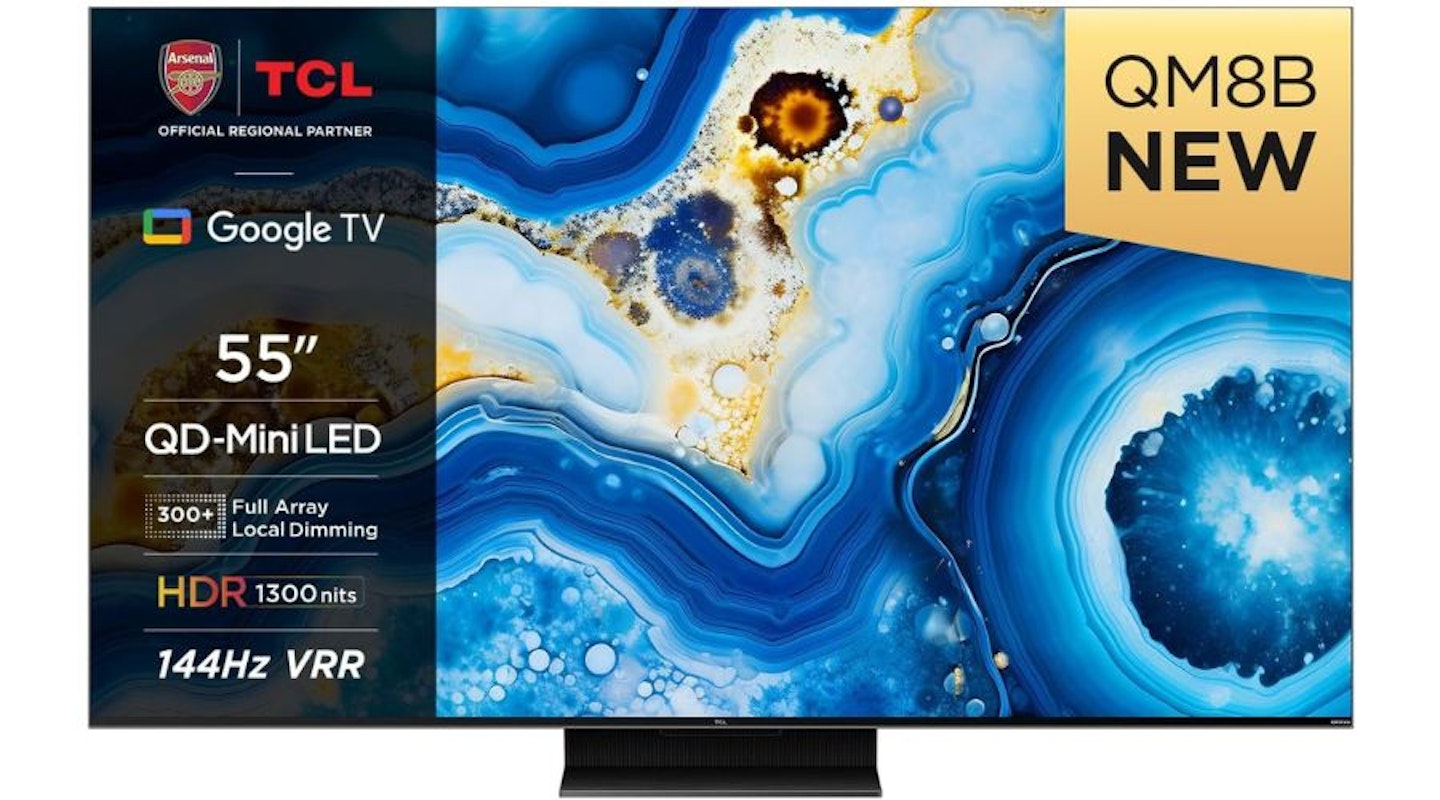 TCL
TCLTCL continues to burnish its reputation for making some of the best budget TVs, and when it comes to gaming, our current top pick is the TCL QM8B – which, at £649 for the 55-inch model, is exceptionally affordable considering everything you're getting.
This TV used mini-LED backlight technology to provide excellent contrast between light and dark parts of the screen – peak brightness hits 1300 nits. QLED quantum dot tech supplies a billion different colours and shades, to create a vibrant and rich palette for displaying games. Support for just about every HDR format means you're virtually guaranteed the best possible picture no matter what you're watching.
The TCL QM8B has Game Master Pro mode, which supports AMD FreeSync Premium Pro for fluid, artifact-free performance. And with a 144Hz variable refresh rate, tearing and blurring are things of the past. Two 15W speakers are supported by Dolby Atmos and DTS-HD, while the smart TV interface is provided by GoogleTV.
Pros
- Very bright
- Anti-glare screen
- Lots of gaming features
Cons
- Sound isn't amazing
- Viewing angles aren't the best
| Screen size: | 50, 55, 65, 75, 85-inch |
| Resolution: | 3840 x 2160 (4K) |
| HDR: | HDR10+, HLG |
| Refresh rate: | up to 144Hz variable refresh rate |
| Audio output power: | 2 x 15W |
| Connectivity: | HDMI 1.4, HDMI 2.0, HDMI 2.1 |
| Energy rating: | G |
| Extra features: | ALLM Game Mode, FreeSync Premium Pro, Dolby Vision, Dolby Atmos |
Best big screen
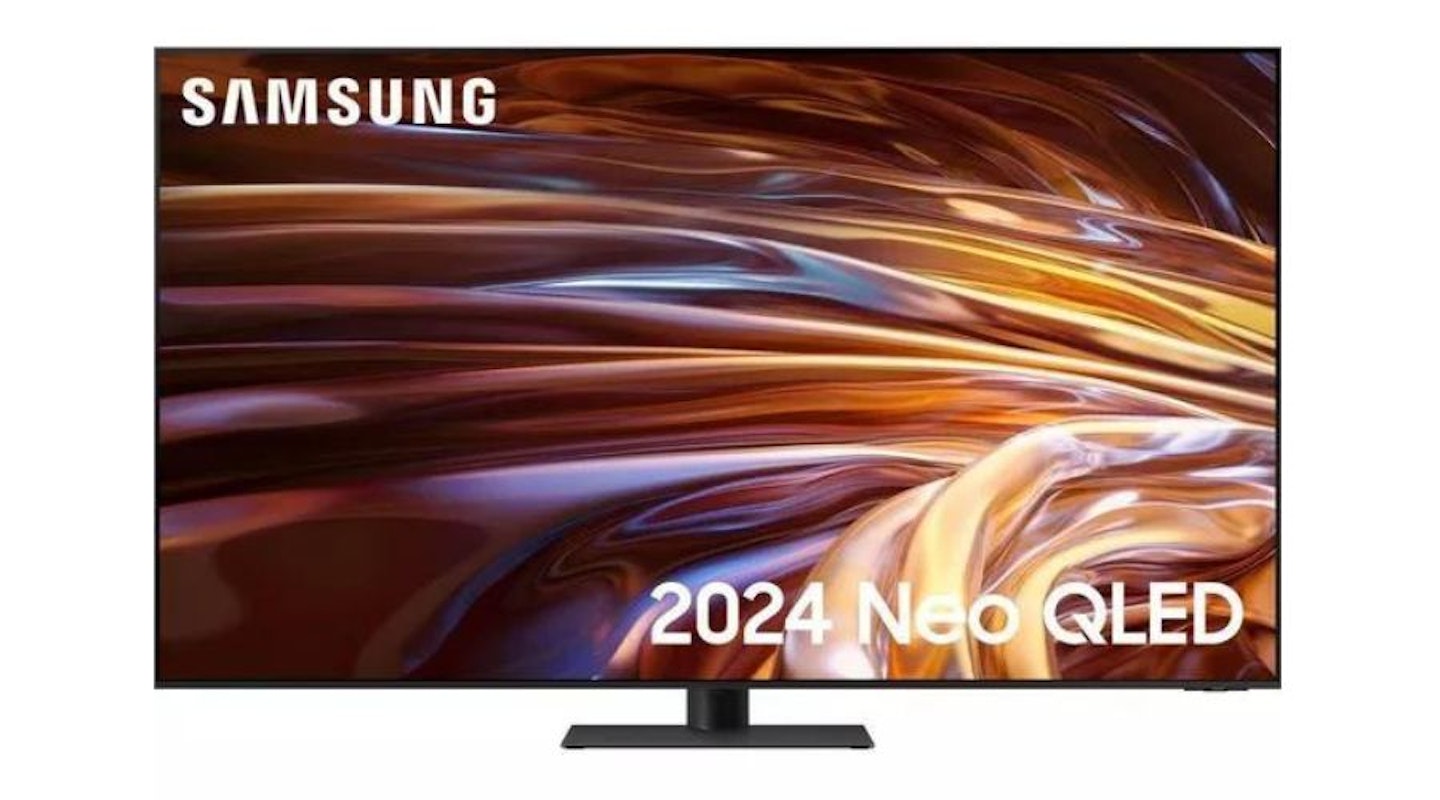 Samsung
SamsungSamsung's Neo QLEDs take the lead over comparable OLEDs and standard QLEDs in terms of brightness. The 120hz variable refresh rate is there for silky smooth gameplay (and there's support for 4K/144Hz with PC connected content). But even better than that is the inclusion of AMD FreeSync Premium Pro, so wave goodbye to screen tearing and stutter. Resolution is bolstered by this TV's Neo Quantum AI Gen2 4K Processor. Analysing every scene on the fly, the AI-powered image enhancement will push your visual gaming experience even higher.
Sound-wise, the QN95D will really blast out those in-game sound effects and cinematic music. But if that's not enough power, the addition of Samsung's Q-Symphony will pair your eight internal multi-directional TV speakers with your soundbar too. Dolby Atmos and Dolby Digital will elevate the soundstage of your first-person shooter to envelop the room for total immersion. You even get Alexa and Bixby voice services built in.
Pros
- Excellent 120Hz variable refresh rate
- Gamer-friendly features and modes
- Stunning Dolby Atmos surround sound and Q-Symphony speaker feature
- HDR and picture processing is breathtaking
Cons
- A problem for some, a feature for most – this can be extremely bright in darker rooms
- No Dolby Vision
| Screen size: | 55, 65, 75, 85-inch |
| Resolution: | 3840 x 2160 (4K) |
| HDR: | HDR10+ |
| Refresh rate: | Variable up to 144Hz / FreeSync Premium Pro |
| Audio output power: | 70W |
| Connectivity: | HDMI 2.1 x 4 |
| Energy rating: | F |
| Extra features: | Motion Xcelerator Turbo Pro, Real Depth Enhancer Pro, Object Tracking Sound+, Ultrawide Game Mode, Dolby Atmos Surround Sound, Alexa built-in, ALLM, HGiG |
Best mid-budget
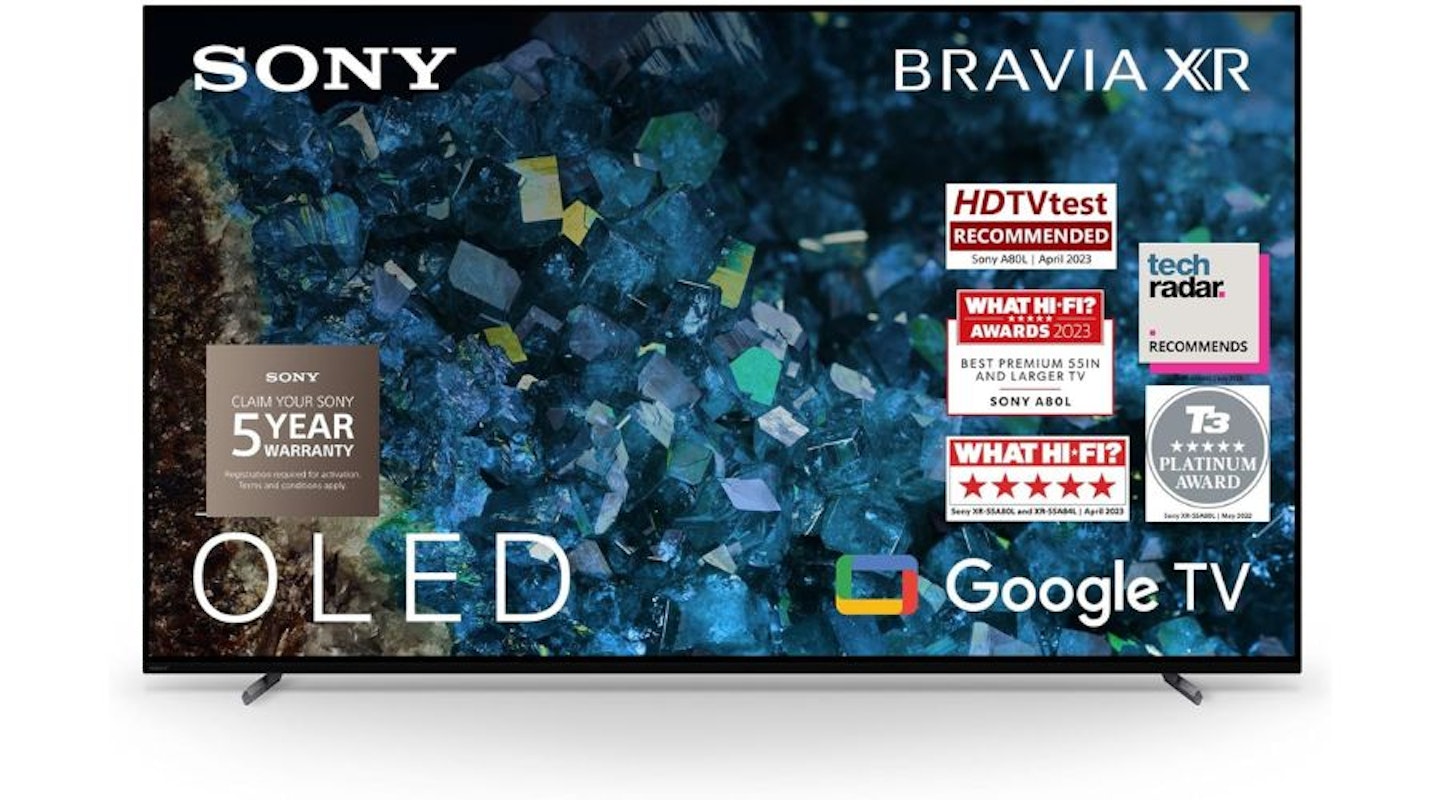 Sony
SonySony produces some of the best TVs for PS5 gaming, but the Sony Bravia XR A80L is no slouch for Xbox gamers either. It's got almost everything a dedicated gamer could ask for, at a mid-range price point. While latency of 16.5ms isn't great, that's offset by 4K/120Hz variable refresh rate through both HDMI 2.1 ports, and auto low latency mode. It's a very capable gaming telly.
But, given that most of us use our TV for more than just gaming, it's also a strong all-round display. The OLED display can deliver pure blacks to give brilliant contrast, and automatically tries to upscale whatever you're watching to 4K, or close to it.
The A80L also makes use of Acoustic Surface Audio technology, which means sound comes from the right place on the screen. Compatible with Dolby Atmos, XR Surround creates 3D audio, even without using one of the best soundbars.
Pros
- Excellent sound quality
- Dedicated Game Menu
- Extremely sharp picture
Cons
- Extremely sharp picture quality
- No HDR10+ support
| Screen size: | 55, 65, 77, 83-inch |
| Resolution: | 3840 x 2160 (4K) |
| HDR: | HDR10, Dolby Vision, HLG |
| Refresh rate: | 120hz, variable |
| Audio output power: | 50W |
| Connectivity: | HDMI 2 x 2, HDMI 2.1 x 2, USB x 2, Wi-Fi, Bluetooth |
| Energy rating: | G |
| Extra features: | Cognitive Processor XR, XR TRILUMINOS Pro, Dolby Atmos sound, ‘Perfect for PlayStation 5’ gaming features |
5.
Samsung S95D
Best QD-OLED 4K gaming TV
Samsung's flagship QD-OLED television for 2024, this is unquestionably one of the best TVs of the year. OLED HDR Pro means this is an exceptionally bright display, while also using a new anti-glare filter to minimise distracting reflections on the screen. Even if you're in a bright room, you'll still have no issues seeing the picture on the screen.
Gaming support is impressive. Four HDMI 2.1 ports enable 4K/120Hz playback. There's also support for 144Hz frame rates from compatible PC's, while auto low latency mode and FreeSync Premium Pro work together to reduce tearing and stuttering. There's even an AI Auto Game Mode, designed to automatically adjust the picture settings to suit the type of game you're playing.
Dolby Atmos and Samsung Q-Symphony work with Object Tracking from eight built-in speakers to create an immersive audio experience. AI augments this to help optimise the sound based on what you're watching, and where. The only downer is the lack of support for Dolby Vision Game Mode, which Xbox owners can benefit from on other televisions.
Pros
- Anti-glare filter to reduce distracting reflections
- Lots of features for gaming
- Brilliant for realistic sound with Object Tracking Sound, DTS-X and Dolby Atmos
Cons
- Lack of Dolby Vision Game Mode
- Much more expensive than rivals
| Screen size: | 55, 65, 77-inch |
| Resolution: | 3840 x 2160 (4K) |
| HDR: | HDR10+ |
| Refresh rate: | Up to 144Hz variable refresh rate |
| Audio output power: | 70W |
| Connectivity: | HDMI 2.1 x 4, USB-A x 3, USB-C x 1 |
| Energy rating: | G |
| Extra features: | AMD FreeSync Premium Pro, Motion Xcelerator Turbo Pro, Game Motion Plus |
6.
Sony A95L
Best high-end 4K gaming TV
The best Sony TVs have been consistently among the best brands for years, if not decades. And with the A95L, they’ve produced yet another incredible premium TV. It's one of the absolute best TVs currently available, perfect for cinephiles, and great for gamers too.
In terms of picture quality, brightness, motion response, this is one of the best around. The A95L automatically upscales images close to 4K, XR Clear Image helps reduce blur and image noise, while XR OLED Motion helps reduce blur caused by fast movement – particularly valuable for fast moving games on your Xbox.
There’s also plenty of other support for gamers. Two HDMI 2.1 ports enable 4K/120Hz, as well as supporting VRR and ALLM. You're also provided with the Bravia cam, which recognises where you’re sitting and optimises picture and sound settings accordingly. Multi-view enables you to split the screen, so you can, for example, play your game on one side of the screen, while watching a walkthrough on the other.
The sound is excellent, utilising Sony's Acoustic Surface Audio to make sound come directly from the right part of the screen. XR Surround upscales to 3D surround sound, and Voice Zoom 2 improves the clarity of voices.
For some reason, Sony decided to put the feet of this TV at the very edges of the bottom of the screen. So, you’ll either need an extremely wide TV stand, or a wall mount.
Pros
- Superb sound quality means you won’t need a separate soundbar
- Crystal clear display is bright and vibrant
- Wide viewing angle and anti-reflection mean it can perform in the biggest and brightest of rooms
Cons
- Stand design makes it impractical
- Only two HDMI 2.1 ports
| Screen size: | 55, 65, 77-inch |
| Resolution: | 3840 x 2160 (4K) |
| HDR: | HDR10, HLG, Dolby Vision |
| Refresh rate: | Variable up to 120Hz |
| Audio output power: | 60W |
| Connectivity: | HDMI 2.1 x 2, HDMI 2.0 x 1 |
| Energy rating: | F |
| Extra features: | XR 4K upscaling, XR Clear Image, XR OLED Motion, VRR, ALLM |
7.
Hisense U8N
Best for bright rooms
 Hisense
HisenseIf you play games in a bright sunlit room, you'll need a TV that's bright enough to see. The Hisense U8N series does exactly that, and pleasingly, does it without breaking the bank. The U8N is a mini-LED screen that costs significantly less than many flagship televisions, but still offers plenty in return.
If you want a really bright screen, this one is exceptional, boasting a peak brightness of over 3000 nits – trust us, that's a lot. While it won't be necessary most of the time, the fact that it can go that bright means that unless the sun has gone supernova, you'll almost certainly be able to see the screen. And, if the sun has gone supernova, finishing the latest episode of Loose Women probably isn't at the top of your agenda.
While the sun is behaving itself, you get a whole host of features that mean this TV competes with far more expensive models. AI scene-by-scene processing to automatically upscale your content. Multi-channel audio with Dolby Atmos support. Support for all HDR formats, plus Dolby Vision IQ, which optimises your screen based on your lighting conditions. The Low Reflection screen technology absorbs reflections, reducing the distractions you'll see mirrored – essential in bright conditions.
For gaming, the U8N supports a variable refresh rate up to 144Hz, FreeSync Premium Pro, auto low latency mode, and support for Dolby Vision gaming. It isn't quite as quick as some others in terms of input lag, but unless you're an elite gamer, it probably won't be noticeable.
Overall, this is a superlative mid-range television, ideal for bright rooms, and great anywhere else as well.
Pros
- Extremely bright
- Solid audio performance
- Lots of features for gamers
Cons
- Contrast not as good as other TVs
- Some issues with colour accuracy
- Latency isn't the best
| Screen size | 55, 65, 75-inch |
| Resolution | 3840 x 2160 |
| HDR | HDR10, HDR10+, Dolby Vision, Dolby Vision IQ, HLG |
| Refresh rate | Up to 144Hz variable refresh rate |
| Audio output power | 60W |
| Connectivity | HDMI 21 x2, HDMI 2.0 x 2, USB 2.0 x 1, USB 3.0 x 1 |
| Energy rating | G |
| Extra features | ALLM, FreeSync Premium Pro, HDR Game Mode, Dolby Atmos, Alexa |
Best picture and sound
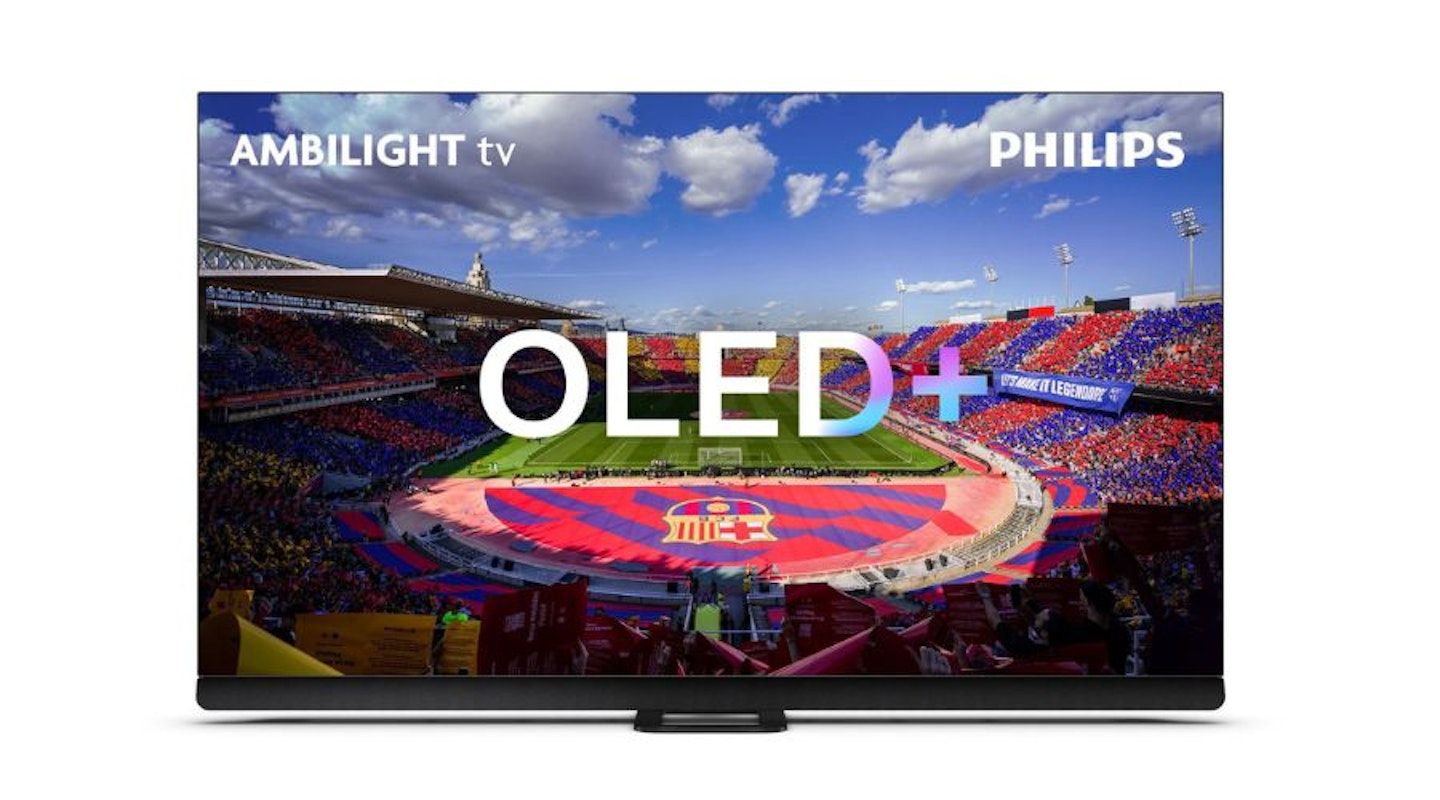 Philips
PhilipsWhen it comes to watching tv, films, or playing games, the Philips OLED908 television takes immersion to a different level. This TV offers fantastic picture quality, while a dedicated speaker array delivers improved audio without using a soundbar or speakers. Ambilight is a final flourish, helping to really draw you into whatever you're watching.
Ambilight is designed to project ambient lighting onto the wall around the television. When it's set to vivid, the colours change to match whatever is on the screen. Philips claims that by minimising the contrast between a bright screen and dark surroundings, Ambilight can help reduce eye strain.
This particular TV isn't just about gimmicks, though. As well as Ambilight, this OLED display delivers stunning picture quality, with peak brightness of 2,100 nits. It supports HDR content, including Dolby Vision, HDR10+ Adaptive, HLG and HDR10 formats. It's also got plenty for gamers, with a 120Hz refresh rate, Variable Refresh Rate, Auto Low Latency Mode, and Dolby Vision gaming support.
While still a smart design, it is thicker television than many rivals. The built-in speaker array, made by Bowers and Wilkins, is the main reason for this. That array makes this one of the best televisions on the market for audio, even without the aid of a soundbar. It's a great all-round package of great picture and sound quality, gaming features, and immersion.
Pros
- Ambilight is great for immersion and can help reduce eye strain
- Speaker array is a cut above the norm
- Loads of features for gaming
Cons
- Only two HDMI 2.1 ports
| Screen size | 55, 65, 75-inch |
| Resolution | 3840 x 2160p |
| HDR | Dolby Vision, HDR10, HDR10+, HLG |
| Refresh Rate | 120Hz variable refresh rate |
| Audio output power | 80W |
| Connectivity | HDMI x 4 |
| Energy rating | G |
| Extra features | HDR game mode, Google Assistant, Alexa, Ambilight |
9.
LG C3
Best last gen
While this model was released in 2023, the LG C3 is still a great telly with plenty of useful features – and a relatively affordable price. Having been around for a year, it's usually considerably cheaper than it was at launch, making it excellent value for money.
The slim bezels look fantastic, and the screen is a wonderful 4K OLED display that looks stunning. HDR support and high pixel density create incredibly sharp images. A light boosting algorithm helps enhance contrast, while Dolby Atmos is supported by Virtual Surround Sound to create an immersive soundscape around you.
Slightly disappointing is the native 100Hz refresh rate, but 4K/120 fps support is available via the HDMI 2.1 ports. A light boosting algorithm helps enhance contrast, while Dolby Atmos is supported by Virtual Surround Sound to create an immersive soundscape around you.
For gaming, this won't disappoint either. Variable refresh rate, auto low latency mode, HGiG, FreeSync Premium and G-Sync compatibility are all supported. Game Optimiser mode automatically provides the perfect settings for a variety of game genres.
Pros
- Stunning 4K OLED display
- Solid feature set for gaming
- Good OS
Cons
- Sound could be better
- Not a huge upgrade over the LG C2 from a year before
| Screen size | 42, 48, 55, 65, 77, 83-inch |
| Resolution | 3840 x 2160p |
| HDR | Dolby Vision IQ, HDR10, HLG |
| Refresh Rate | 120Hz |
| Audio output power | 40W |
| Connectivity | HDMI 2.1 x 4, USB 2.0 x 3 |
| Energy rating | F |
| Extra features | Dolby Atmos, VRR, ALLM, HGiG, FreeSync Premium, G-Sync |
Buyer's guide: Best 4K TVs for Xbox Series X in 2023
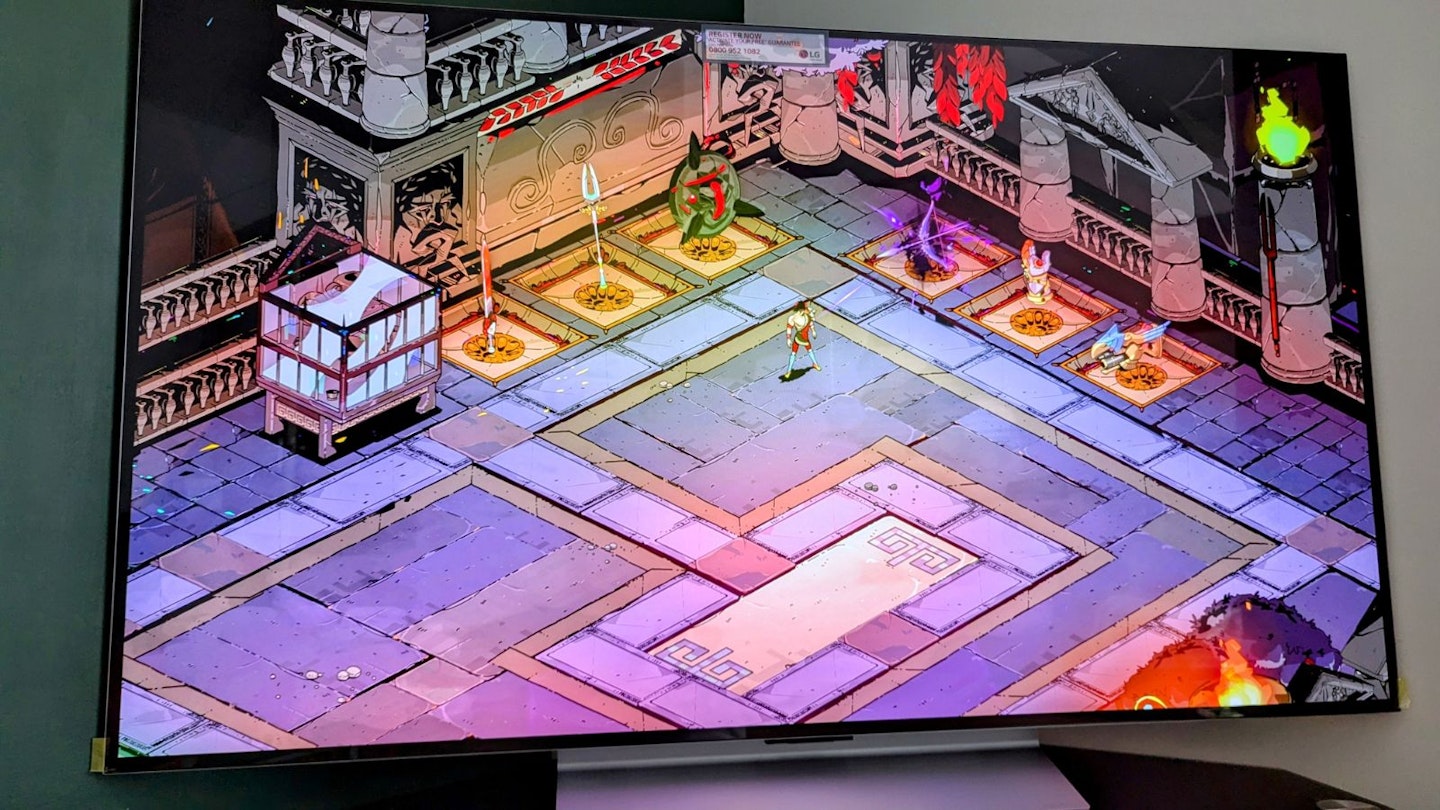
OLED versus QLED and other panel types
Whether it's the stunning vibrancy of QLED or the terrific contrast of OLED, it can be daunting to choose between the two hotly contested TV technologies. Now, Samsung has lived up to its reputation for innovation with the addition of a hybrid between the two: QD-OLED. So what's better for gaming?
OLED:
OLED technology has ultra-low latency. This is the response time between when you press a button on your controller and the game reacting to it. The lack of backlight in OLED TVs means that response times are often 1-2 milliseconds. A 120Hz panel would also provide that crisp, pin-point accuracy that you've been looking for. OLEDs work by generating their own source of light, which also means they can be controlled (or turned off) pixel by pixel for perfect blacks and excellent detail.
QLED:
QLED used to be an inferior option regarding response times, but now that's a thing of the past. There are plenty of 120Hz panels and ultra-high-speed response times to choose from. When you pair this with QLED's vastly superior vibrant colour range and high brightness levels, QLED is our pick for the best 4K TV panels for gaming. The only real downside of the way QLED panels work is the fact that they don't generate their own light. This means that they're dependent on the backlight. Backlit panels typically suffer from blooming or light-bleed from light areas into dark parts of the image. But, with excellent local dimming zones built into the best models, this is much less of an issue now.
QD-OLED:
QD-OLED is the new kid on the block. Samsung has paired the fine control of OLEDs with the brightness and extended colour accuracy of QLED for what is probably the most exciting TV tech innovation of recent years. The only thing that stops us from widely recommending it is that they're currently only offered by a handful of manufacturers.
Mini-LED:
Mini-LED panels also deliver a very high-resolution alternative to OLED. As you'd expect, with more densely-packed LEDs also comes the ability to finely control brightness and contrast. Local dimming zones drive deeper and truer blacks. The overall brightness a Mini LED panel can throw out is a little better than OLED. This makes for more accurate HDR performance. But, Mini LEDs don't have the near-infinite level of contrast that OLEDs have when turned off.
Choose the best refresh rate
Refresh rate refers to how many times per second your display can display a new image, measured in Hertz (Hz). The faster the refresh rate, the smoother the gameplay experience, giving you a slight performance edge when it comes to those intense 1v1 duels where every frame counts.
Consider specialist gaming features
4K TVs like the ones on our list come packed with features aimed squarely at gamers. Not only can you find special Game Modes for automatic picture optimisation settings and super-low latency, there are often entire menus to help you navigate your gaming settings and access related content via smart functions. By researching your shortlist of TVs and comparing these features, you'll find the right one for you.
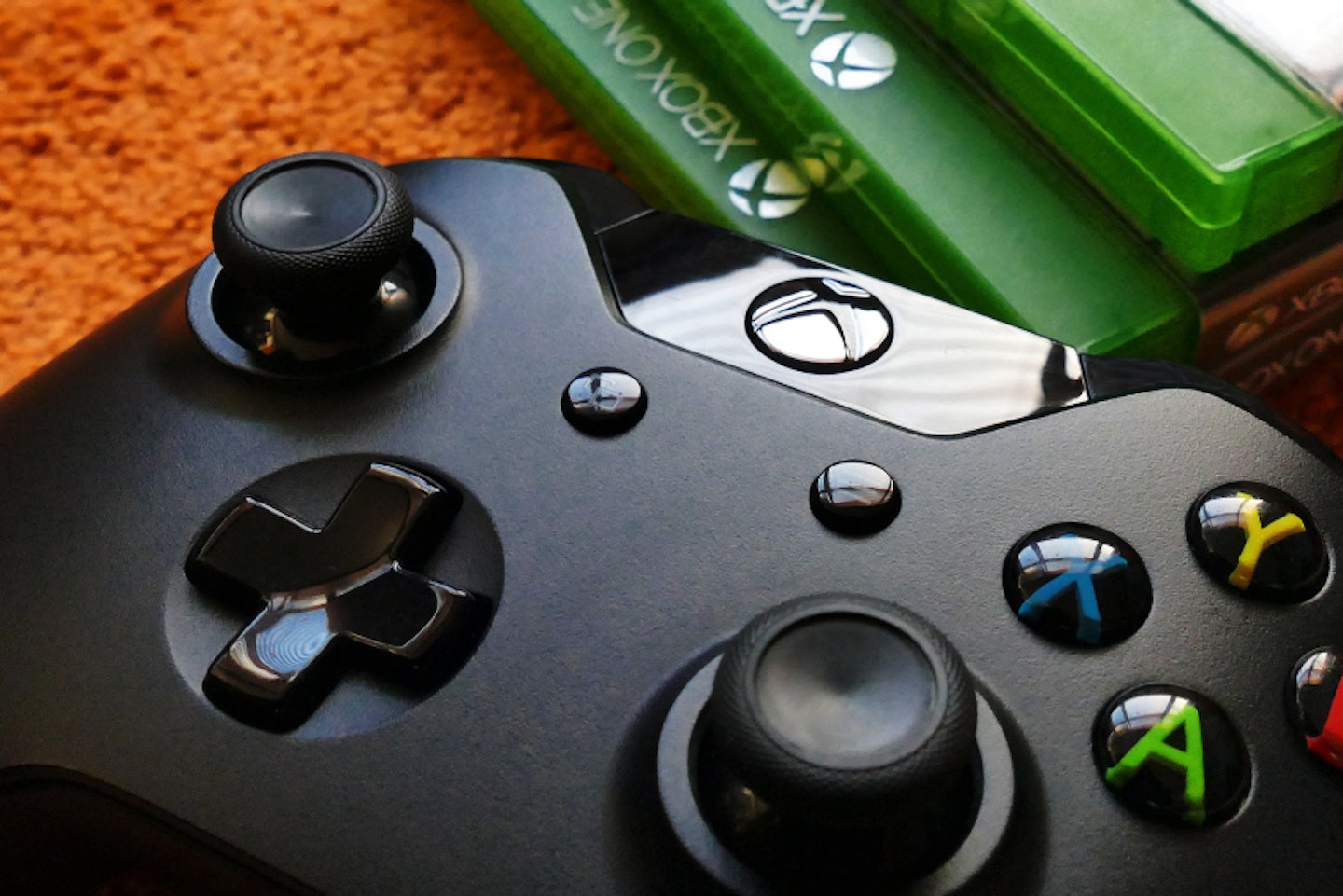
FAQs
What is Xbox Game Pass?
Game Pass is a fantastic way to play all of your favourite new and old Xbox games, going all the way back to the original Xbox, all on one system. As soon as you join, you get access to a ridiculously huge library of content, games like Forza Horizon 5, Gears 5, Halo Infinite, Sea of Thieves, Subnautica, the list is endless. If you're not a console gamer, you can still get the Game Pass for just £1 on the first month. What a steal.
What's the difference between full-HD and 4K?
Full HD is a 1080p screen (usually 1920 x 1080p) that is fairly sharp and is perfect for solid gaming on a budget, but 4K is an entirely different beast. At 4x the resolution of full-HD, 4K is sharp and beautiful to behold. With the addition of HDR (High Dynamic Range) on top, 4K TVs are capable of producing over a billion different colour shades, over the 16 million of standard HD.
Xbox Series X versus PS5 – what's the best?
A hotly debated issue, each console has its ups and downs. We've thoroughly examined the various pros and cons in our article Xbox Series X vs PS5 to help you choose. Choosing one of the best 4K TVs for Xbox Series X doesn't mean it won't work with other consoles, so don't feel constrained by any of the options we've listed here. Xbox, PS5, Nintendo Switch – you name it. If it's a gaming device with a HDMI port, it's all good.
Is an Xbox better than a PC for gaming?
This is another flashpoint for gamers on either side of this divide. As you might expect, it's down to you and the kind of gamer you are. There was a time when most gaming consoles could not support peripherals like gaming keyboards or a mouse, and that would be enough to steer gamers in one direction or another when choosing a system. But now that's no longer the case, so the decision really comes down to a handful of factors.
Firstly, some games are only available on consoles and vice versa, so check first to see the gaming catalogues for either system. Second, if you're the techie type and are used to the flexibility and upgradability that being a PC owner gives you, you might not appreciate being locked into the build and specs of an off-the-shelf console. If you're more the plug-and-play type but still want amazing 4K visuals and modern features like HDR, an Xbox Series X is absolutely the way to go.
What Xbox Series X games support 120fps?
120fps gameplay isn't supported across the board. Only a select number of games can run at such a high framerate, and only a fraction of those games can simultaneously run at 4K. Here are our favourites;
Halo Infinite – supported at 1440p and 1080p
Doom Eternal – supported at 1800p / 1080p
Psychonauts 2 – supported at 1440p and 1080p
Sea of Thieves – supported up to 1080p
Call of Duty: Black Ops Cold War – supported up to 1200p
Fortnite – supported up to 1440p
Destiny 2 – supported up to 4K
What HDMI cables do I need for 120fps?
You'll need HDMI 2.1 cables to support 120fps, as well as any 4K gameplay you plan on doing. Despite cables being backwards-compatible, if your TV HDMI port only supports a lower version, it won't matter how good your cable is; you'll only be able to watch what your TV will support. HDMI 2.1 supports a higher range of video resolutions and refresh rates, plus dynamic HDR. So, if in doubt, always go for HDMI 2.1 cables or higher, such as the KabelDirekt HDMI 2.1 cable below. If you want more to choose from, check out our picks of the best HDMI cables of 2023.
Best value HDMI 2.1 cables

One of the best deals on reliably built HDMI cables to be found, this three-metre one from German brand KabelDirekt is the perfect length to suit most gaming setups.
Pros
- HDMI 2.1 support
- Good practical length
Cons
- None that we can find
| HDMI standard: | 2.1 |
| Length: | 3m |
| Resolutions supported: | Up to 8K |
| Sound support: | 7.1 surround sound |
- Customer review: "This is a high-quality 3M HDMI cable from Kable Direct. It is certified for signal carriage up to 48G 8K at 60Hz. It is made of high-quality wire and the plugs are gold-plated for a good signal. Being a 3-metre cable, it allows easy placement of equipment. I find 1 and 2 m cables a little too tight. Overall, it is a high-quality cable at a reasonable price. I have used it with various game consoles and DVD equipment and it performs flawlessly. The cable is very flexible and easy to thread around the back of consoles etc."
Why should you trust us?
At What’s The Best, our mission is to provide accurate and reliable reviews, ensuring our readers receive honest and transparent information about the best technology products available. Anything less would undermine our commitment to being a trusted source of unbiased product information.
Our dedicated in-house writing team comprises experts with extensive experience and a genuine passion for technology. Collectively, we have spent decades testing and writing about tech, leveraging our expertise in all our articles, advice pieces and reviews.
We maintain complete editorial independence and do not accept payment for product reviews. Our writers have full control over their content, ensuring that products are selected based solely on the needs of our readers. While we may earn commissions or other compensation from links on our website, this never affects our product choices. These links enable us to continue offering valuable consumer advice, without compromising the integrity of our reviews.
Chris Duffill is a Senior Tech Writer and Reviewer for What's The Best. His background includes writing, editorial, marketing, design, video production and photography.
He specialises in home entertainment and audiovisual tech, including speakers, amplifiers, turntables, streaming media players, and TVs. He is also one of our resident experts in computing (PCs, tablets, smartphones, smartwatches), DSLR photography and all kinds of digital cameras. He also writes about retro gaming, game consoles and various electronic gadgets. If it plugs in, lights up or makes a noise, he'll write about it.
Subscribe to the What's The Best Newsletter to keep up to date with more of the latest reviews and recommendations from the rest of the What's The Best team.


